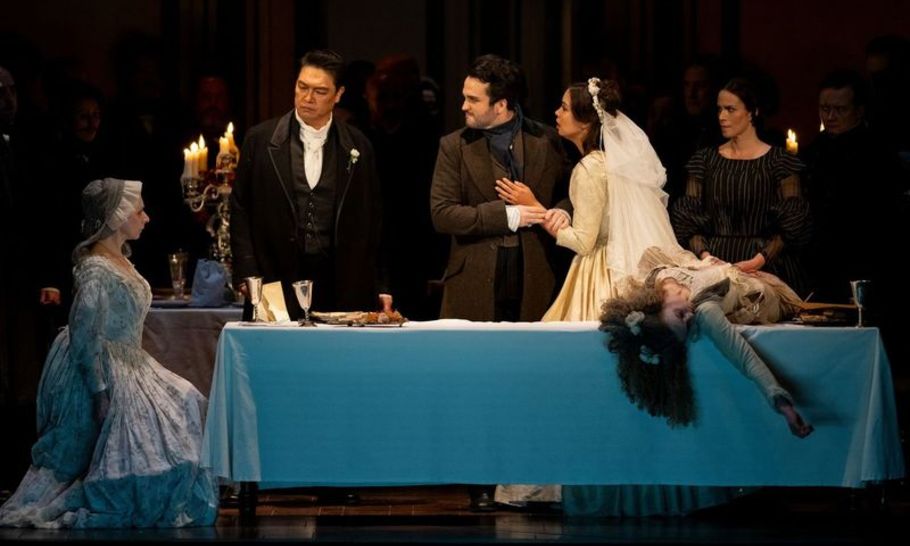Bravo for ‘Lucia di Lammermoor’ at the ROH

ROH Lucia di Lammermoor © Camilla Greenwell 2024
She must have listened. The furious denunciations and audience booing that greeted Katie Mitchell’s 2016 production of Donizetti’s Lucia di Lammermoor — her first classical opera for the ROH — have resulted in her abandoning its more egregious aspects. The sex on stage in Act I — gone; the amplified sound of bathwater in Act III — gone. Perhaps Ms Mitchell, or her revival director Robin Tebbutt, has realised that for many opera-goers it’s not necessary to hit them over the head with theatrical effects illustrating a story most of them already know, because it’s the music that does it. Music they love, enhanced by the staging, rather than a staging enhanced by music.
When Donizetti wrote this opera in 1835 he had already enjoyed huge success with Anna Bolena some five years earlier, and after casting around for a subject that would not be mangled by the censors — a perennial problem in Naples — he settled on Walter Scott’s The Bride of Lammermoor. His librettist Cammarano worked swiftly, having a fine translation to hand, along with three earlier Italian librettos used already in Paris (1829), Trieste (1831) and Padua (1834). Donizetti had completed the score a mere six weeks after choosing the subject.
The setting of Scott’s novel is the Lammermuir Hills in the 17th century. Its eponymous heroine, the emotionally fragile Lucy Ashton (Lucia), is caught in a feud between her own family and that of the Ravenswoods. The opera is famous for its mad scene, a vocal extravaganza that Ms Mitchell quite correctly shows coming on Lucy gradually because of the stress she is under from the men in her life.
These are principally her brother Enrico and her lover Edgardo, Master of Ravenswood, with whom she is passionately in love, as he is with her. A forged letter given to Lucia by her brother suggests Edgardo has lost interest, but when he returns to his beloved all hell breaks loose. In Ms Mitchell’s production the blood of the mad scene is not from the murder of the bridegroom Arturo, forced on Lucia by her brother, which is done rather cleverly by first teasingly blindfolding him with a white stocking, but from a miscarriage. (Obviously extramarital sex could not even have been implied in Donizetti’s Naples, but at least it is no longer depicted on stage.) The teasing is a nice idea, giving Lucia the upper hand in a production where women have agency, rather than being mere ciphers manipulated by the men in their lives.
This production cleverly divides the stage into two halves for all scenes, one half exhibiting off-stage action while the singers occupy the other half. This time around the off-stage action, including the ghosts who wander around occasionally, seemed less intrusive. Instead, the Italianate glory of the opera was beautifully realised under the baton of Giacomo Sagripante, currently music director of the Tbilisi Opera House in Georgia. The cast was outstanding, with Nadine Sierra as Lucia, Rachel Lloyd as her companion Alisa, Artur Rucinski as her brother Enrico, Xabier Anduaga as her beloved Edgardo, and Andres Fresno as the luckless Arturo.
Superbly sung all round, this production elicited cheers from the audience, particularly for Mr Anduaga in his big aria near the end after Lucia is dead. If it’s bel canto opera you want, this is it — with a vengeance.
A Message from TheArticle
We are the only publication that’s committed to covering every angle. We have an important contribution to make, one that’s needed now more than ever, and we need your help to continue publishing throughout these hard economic times. So please, make a donation.





